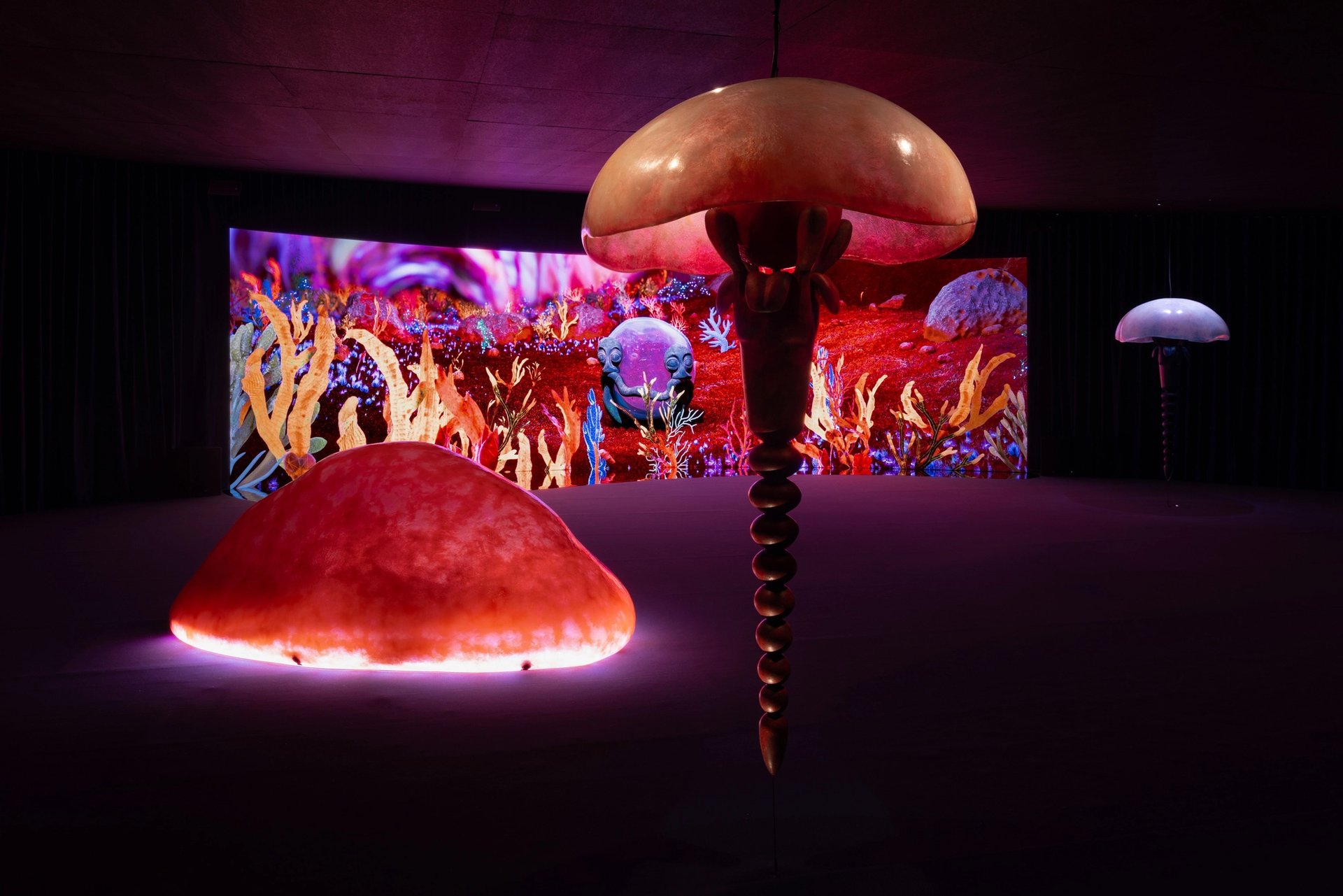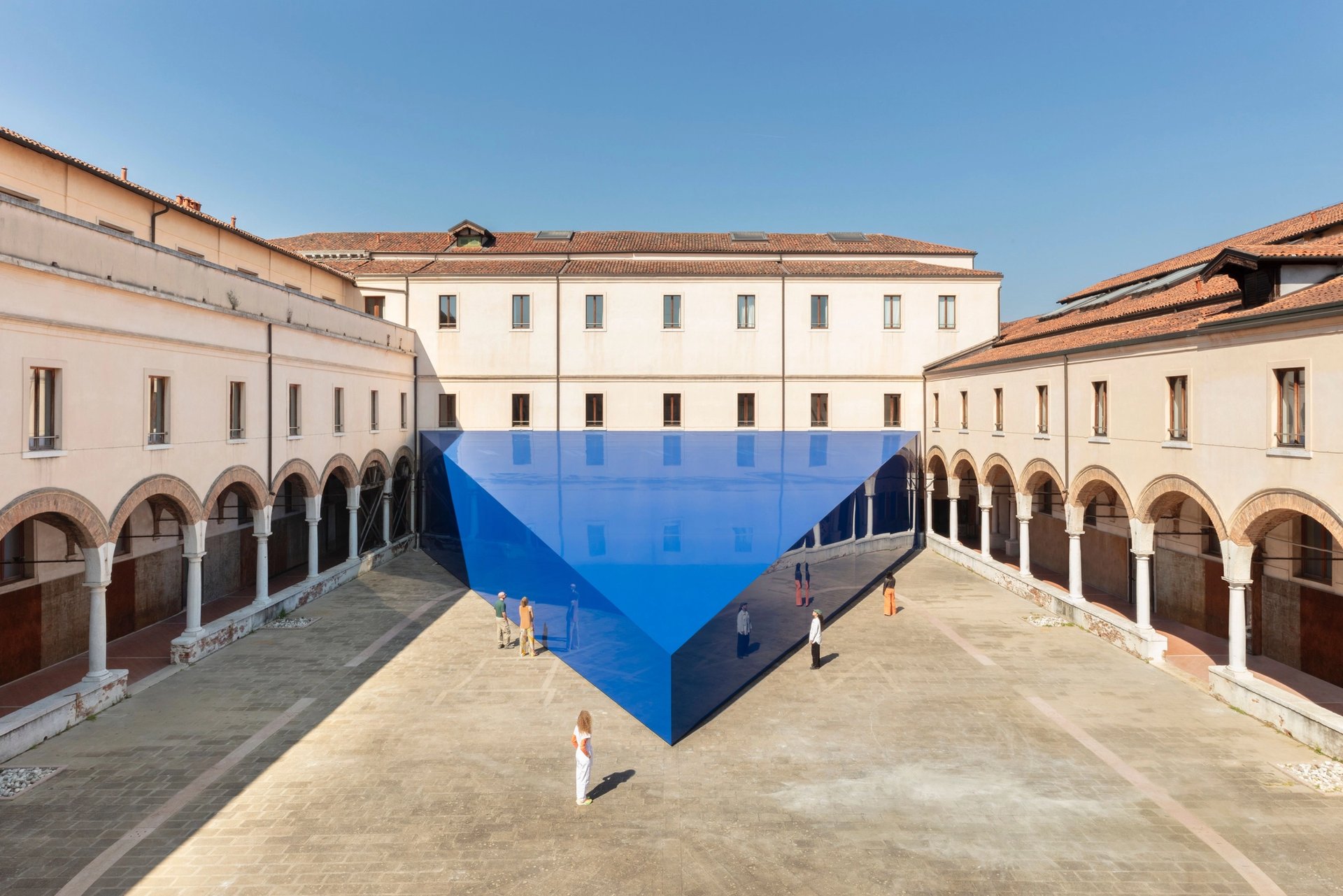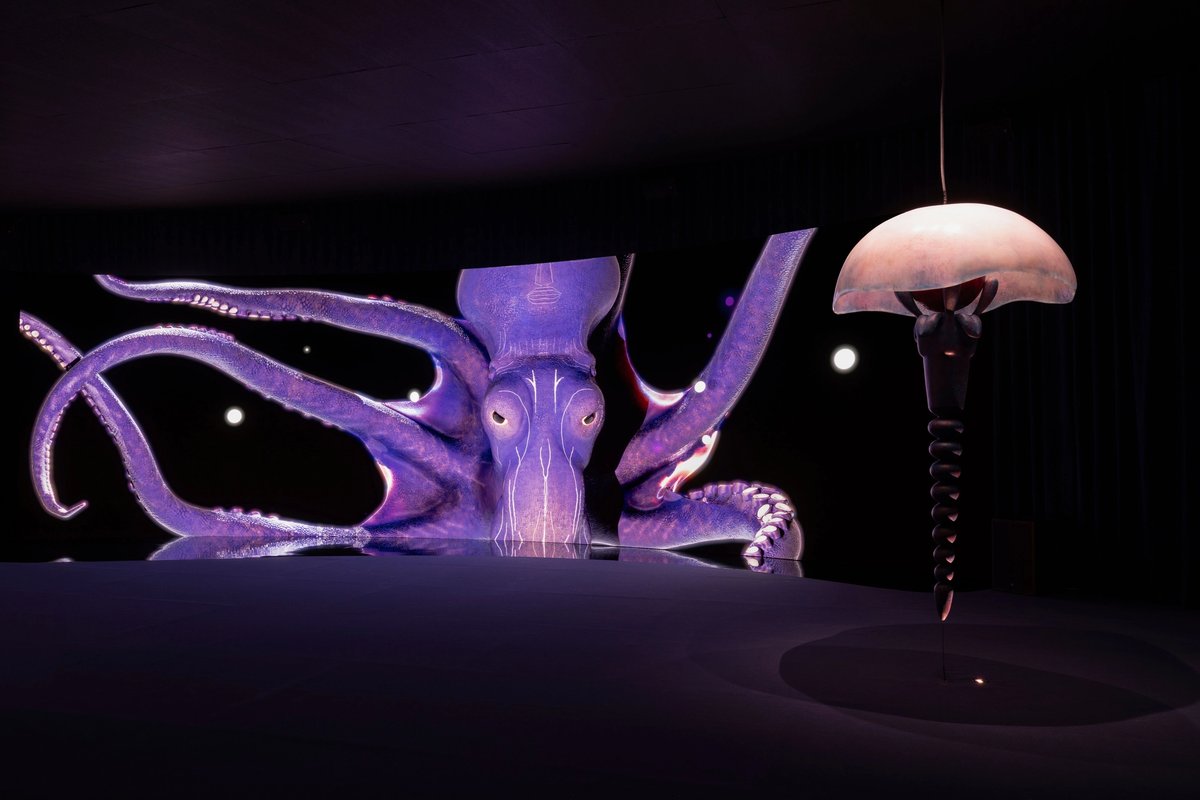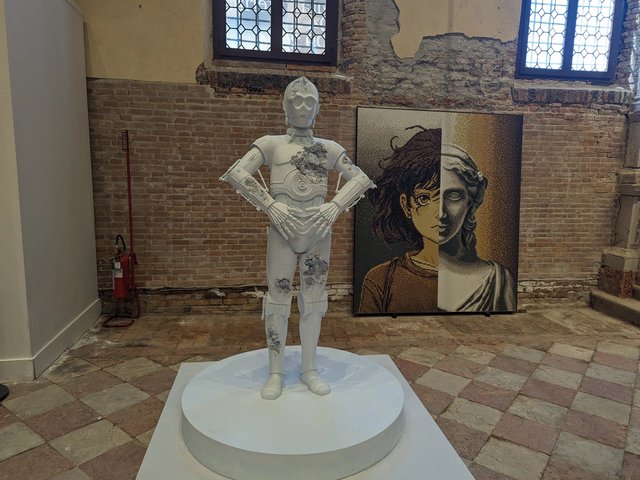How can we break free from Western ways of categorising the world? That is a question at the heart of Josèfa Ntjam’s collateral exhibition at this year’s Venice Biennale, which tells a creation story that blends mythology, marine biology and science fiction. It also, crucially, puts artificial intelligence (AI) in the hands of visitors—helping to grow the technology’s data sets beyond the Western canon.
Swell of spæc(i)es, commissioned by the Berlin-based LAS Art Foundation, takes place in a futuristic, purpose-built pavilion in the courtyard of the Accademia di Belle Arti di Venezia. It presents a film featuring a cast of characters forged using AI, 3D models of plankton, scans of statues of West African deities, archival photographs and more—set against a backdrop recalling both the deep ocean and outer space. Also on display is a series of “sonic sculptures” made using organic materials, such as bio-sourced resin. They include a vibrating “membrane” in which people can lie down.

swell of spæc(i)es includes “sonic sculptures” made using organic materials such as bio-sourced resin. Among them is a vibrating “membrane”, shown on the left, in which people can lie down
Commissioned by LAS Art Foundation. Courtesy the artist; LAS Art Foundation. © ADAGP, Paris, 2024. Photo: Andrea Rossetti
Ntjam, who is based in Saint Étienne, France, often takes the ocean as a central theme in her work, which spans installation, photomontage and more. For her it is a space of mythology and memory, tied up with stories such as that of the Drexciyans, an underwater civilisation invented by the electro group Drexciya in the 1990s—and said to have derived from the children of pregnant African women who were thrown off ships during the transatlantic slave trade.
Plankton, Ntjam says, are scientific “carriers of memory”, sinking to the seabed to help to form sediment when they die, playing host to life that follows. In the pavilion, they become flexible, transient vehicles through which the artist tells stories of figures such as Amma, the creator god of the Dogon people indigenous to West Africa. Plankton also serve—given their position as an otherworldly, difficult-to-define organism—as a metaphor for Ntjam’s resistance to ways Western culture has tried to classify people and their surroundings.
To ensure such ideas go as far as possible, Ntjam has worked with plankton scientists at Cardiff University and Venice’s Istituto di Science Marine (ISMAR) on the project. This includes collaborating on a separate, interactive section, hosted at the Palazzina Canonica. It gives members of the public access—via an AI interface—to Ntjam’s existing dataset as well as images of plankton created by ISMAR’s monitoring equipment, so they can create their own creatures. The results will be displayed as part of a digital ecosystem.

A rendering of the pavilion at the Accademia di Belle Arti di Venezia
Commissioned by LAS Art Foundation.Courtesy the artist, LAS Art Foundation, Galerie Poggi, Paris. © ADAGP, Paris, 2024
Considerable attention has been paid of late to the biases inherent within AI, believed to be largely a result of one-sided, geographically and culturally limited data sets available for apps to draw from. Ntjam sees the project as a way of pushing for important changes in the way AI is trained and constructed.
“I think the AI I use has been created through the Western gaze,” she says. “I really consider it as part of the library of the internet, yet sometimes when you try to create something, you see the lack of information, the lack of representation. It’s really important to disrupt it with new images and new information.”

Josèfa Ntjam links her work to Afrofuturism, which she describes as “a practice of research”. She furthers this practice with the art & research collective Blacks to the Future, based in Paris.
© Sarah Makharine
Ntjam links this mission to Afrofuturism, a term she avoided for a few years as she felt it had become too “trendy”, and too vaguely defined. “Afrofuturism is not a movement, it's a practice of research,” she says. It is such a research-based approach—which she compares to sampling or collage—that seeks to pursue, using pre-existing references and visuals “to create something new”.
As with many of her projects, this is achieved in Venice in an all-encompassing way: bursts of narration, for example, emit from the trembling sculptures. A meditative soundscape by the composer Fatima Al Qadiri, meanwhile, envelops visitors for the duration of the film. Does Ntjam see herself as an immersive artist? “I need to analyse, but it's true, I really love to immerse people,” she says. “It’s partly because with the topics that I explore in my work, you need to be there. You need to be a super present.”
Such immediacy is encouraged by the pavilion itself, which is designed by Una / Unless, an architectural practice led by Giulia Foscari, previously of firms such as Rem Koolhaas‘s OMA. The structure cuts through the Accademia's courtyard like a dagger, its shiny, reflective exterior making visitors aware of both themselves and the surrounding Renaissance-era building.
The exhibition fits cleanly within the remit of the LAS Foundation, which commissions projects that explore the relationship between science, technology and art. In the past, the foundation has hosted exhibitions on other AI pioneers such as Refik Anadol.
Bettina Kames, the director of LAS Art Foundation, says of this latest project: “What we wanted to bring to Venice is something very experimental, risky and fresh. Ntjam’s work merges the past and the future, and also different continents, and I think that’s what’s really needed, this combining of worlds, this planetary thinking.”
- Josèfa Ntjam: Swell of spæc(i)es, Accademia di Belle Arti di Venezia, 20 April-24 November




